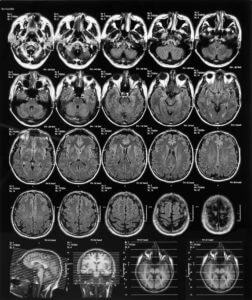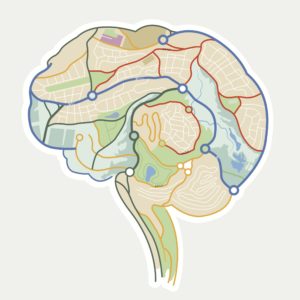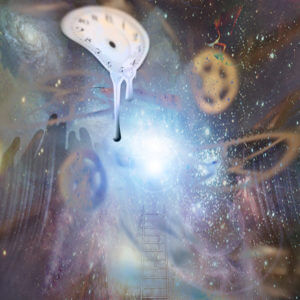Image: Shutterstock
It seems so obvious that the brain is the originator of consciousness. No brain, no consciousness – it seems simple. This assumption has become so fundamental that we barely notice that it is an assumption or that it has never been proved.
Now that consciousness is being taken seriously by scientists let’s look at a number of interesting findings that suggest that there is something deeper happening.
1. There is no particular place that seems to be responsible for the function of consciousness.
I once attended a seminar for doctors given by a neuroscientist who specialised in studying consciousness. The top question of the evening was which part of the brain is responsible for consciousness.
The scientist had to disappoint people as there is not particular place in the brain that gives rise to consciousness. But the question itself just shows how reductionist we are. We are always looking for the ‘part’ that has a particular function because we have bought into the beliefs that we are biological machines with constituent parts.
Studies have been done by people who wanted to find the exact location of consciousness in the brain so destroyed various parts of the brains of rats and found that function is still retained even though most of the brain is essentially mush. Even these people had to conclude that there was no particular location in which consciousness resides although they set out to prove the exact opposite.
2. People with hardly any brain matter can have normal intelligence.
Occasionally people can have brain disorder which causes the fluid of their brain to squash the brain matter into a small space so that they end up with hardly any brain mass.
Amazingly, if treated, some people can live normal lives. Such as the case of Sharon Parker who is a British qualified nurse and mother. Although her condition of hydrocephalus or ‘water on the brain’ was detected and treated in childhood, the condition had already caused the brain to adapt so she ended up leading a normal life, even qualifying as a nurse with very little brain mass.
There is even a case of a person studying higher mathematics with very little brain mass. It seems that if the conditions were from birth and developed slowly then the brain may adapt. It also means we have to think again when we equate brain mass with intelligence and consciousness.
3. The brain alters according to usage.
When I was in medical school we were taught that after childhood the brain stopped growing and the amount of neurones present in adulthood remained static.
That picture has now changed and we can see that certain activities can change the structure of the brain and increase the mass in certain areas. A famous example is in taxi drivers in London who have to go through rigorous training to learn the complex map of London by heart. Studies have shown that this activity seems to increase the mass of the brain.
Now for some this will point to the brain being the origin of consciousness and memory. But think about what is causing the change: experience. You cannot hold experience, it is no tangible. So something not tangible is causing a physical change in the brain. This fits more with the concept that the brain is a conduit of consciousness.
4. The God spot
When the so-called ‘God spot’ was discovered in the brain, scientists were triumphant. By electrically stimulating the brain they were able to reproduce the mystical effects that people often report in certain states such as just before an epileptic fit.
They extrapolated that all mystical or psychic phenomena were simply generated by the brain in this way and people were just mistaking them to be real.
However there is an interesting factor in this. They obtained their results by electrically stimulating the brain with electrodes in the laboratory. So in the case of mystical events outside the laboratory and with our electrodes what is stimulating the brain then? Could it be that consciousness itself is acting through the brain and stimulating areas such as the so-called God spot?
5. Blindsight
The reductionist paradigm is all about physical connections. Sight is a function that is no different. So what happens when the normal optic tracts are damaged yet in tests the person can still ‘see’?
There have been amazing cases of blindsight in which the person has not been able to see by normal means but in controlled testing they correctly identify visual stimuli. With the damage to the optic tracts people with blindsight just should not be able to do this, if the reductionist paradigm is correct.
There have also been cases when some traumatic event like a childhood epileptic fit or a blow to the head have caused the person to have extraordinary abilities. Daniel Tammat is one example – he is able to do complex mathematics and linguistics seemingly effortlessly.
It is interesting how he describes some of the ways he obtains this information. He describes it as coalescing in his mind as shapes which he can then interpret. Is his brain obtaining information from the field in an unusual way?
6. Studies of precognition
Precognition is a subject that is normally discussed with derision by scientists but some scientists such as Dean Radin of the Institute of Noetic Science have actually taken the subject seriously enough to study the topic under controlled conditions. He found that the brain reacts to a stimulus even before the stimulus is present. The brain shows an EEG response before the event.
Again this should not be possible in the reductionist paradigm. According to that paradigm, the eyes should see the stimulus, the impulse needs to travel into the optic tracts from the retina. The brain then turns that into a response in the occipital and frontal areas of the brain.
In reality there isn’t enough time for this long process before the reaction to a visual stimulus happens as the chemical and electrical processes take a certain amount of time, commented on by Nobelist, Albert Szent-Györgyi. The precognition response is even weirder according to the old paradigm.
Of course such scientific studies are attacked – usually the scientist themselves are denigrated. They may even be subject to an organised campaign where people are employed go into the internet in various guises – as experts, forum posters and on social media to downplay the science and the scientists.
To watch a TED talk on these types of campaigns watch this video.
Conclusion
So all in all these are studies which suggest that the brain may not be the originator of consciousness and that something more may be going on. Some of the results may be better explained if the brain is actually a conduit organ for consciousness.
At the very least such results should have a true scientists questioning the basic assumptions of the reductionist paradigm. After all isn’t that how science is supposed to move forward? By spotting results that can change the current received wisdom?
To find out more about the science of consciousness beyond the brain check out The Genius Groove where you can learn about the new science of creativity and how to use this new science to enhance your own life and creative journey.






